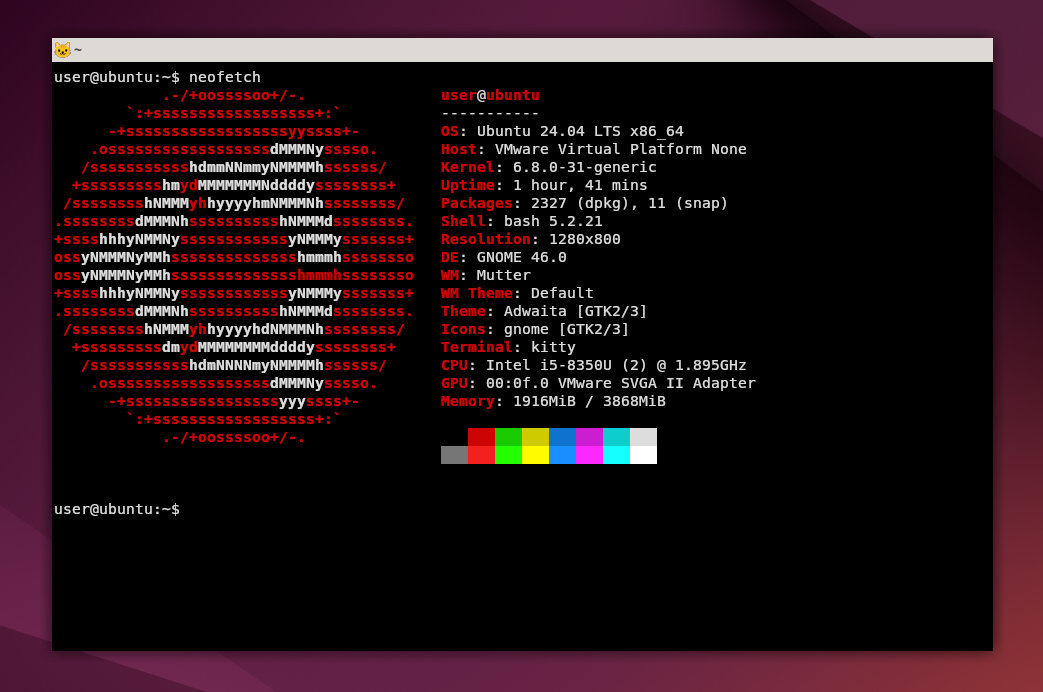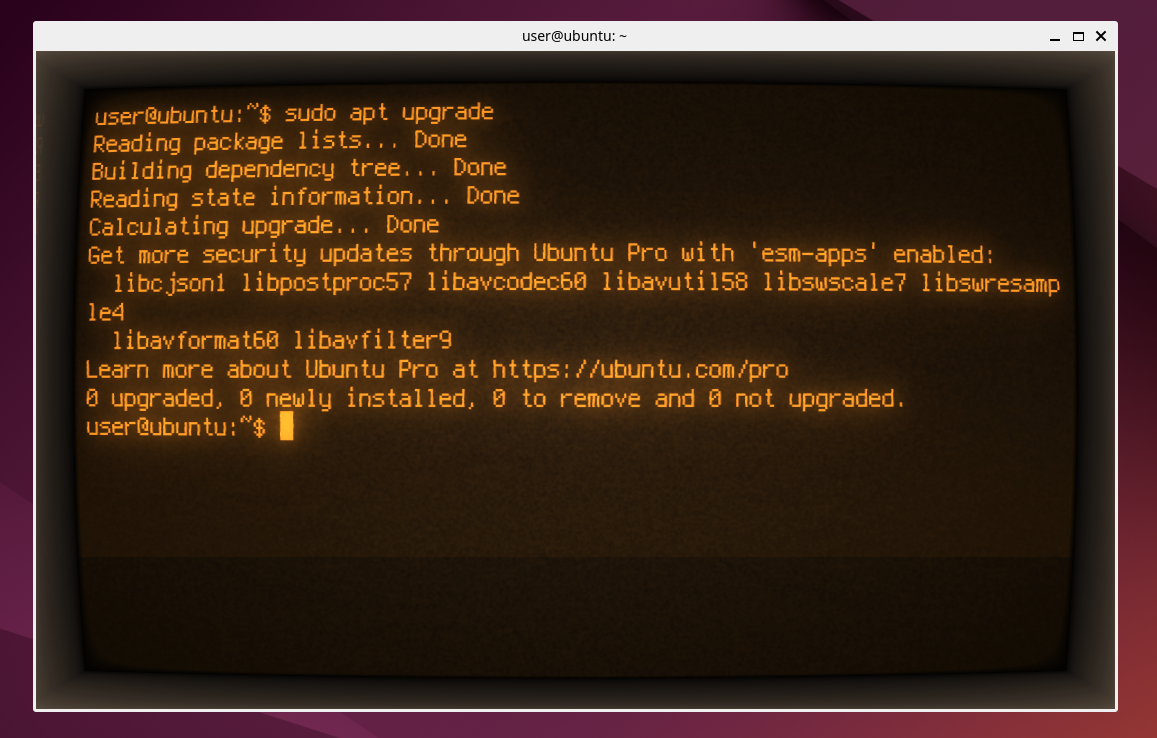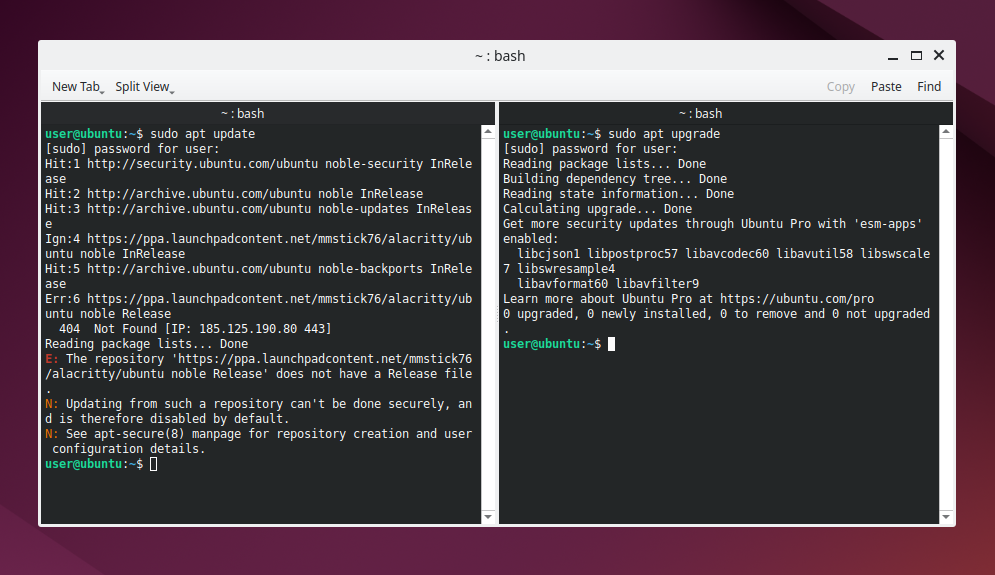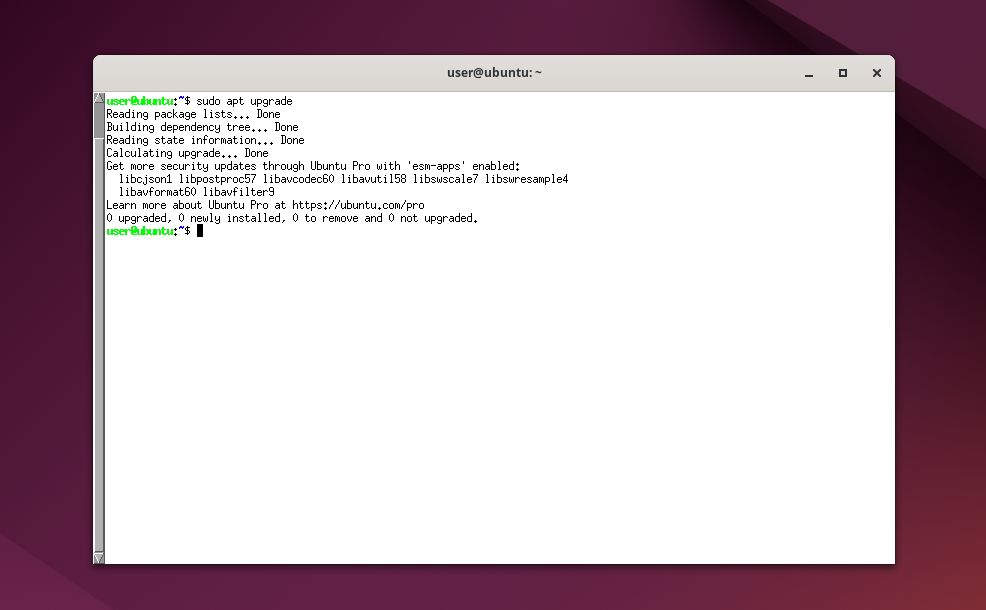
Escape the Mundane: Discover Exciting Alternatives to Your Standard Linux Terminal

Escape the Mundane: Discover Exciting Alternatives to Your Standard Linux Terminal
Quick Links
Key Takeaways
- Upgrade your terminal with Alacritty, a fast, lightweight emulator with extensive customization options.
- Explore Kitty, which offers GPU rendering, advanced features like true color, and scriptable terminal programs.
- Consider Terminator for split screen multitasking, custom titles, and the ability to reorder terminals conveniently.
The default terminal emulator works fine for basic tasks, but what if you want to maximize productivity, speed, or performance? You can use alternative terminal emulators that offer extra features like split views, multiple tabs, and extensive customization options.
Alacritty

Alacritty is fast, lightweight, and has an easy-to-edit configuration file with extensive customization options. It is a GPU-accelerated terminal emulator that balances features and simplicity perfectly. Some of Alacritty’s features include font size adjustment, cursor setting, clickable links, Vi mode, multi-window, and copy/paste right from the start.
Additionally, you can personalize Alacritty using its configuration file. Its configuration is based on YAML files that allow you to customize various settings such as window title, startup mode, window dimensions, and cursor styles.
For example, you can set the opacity property in the window section of your config file to a value between 0.0 (transparent) and 1.0 (opaque). You can also customize your font in the font section by choosing the family, style (regular, bold, italic), and size.
Built with Rust, Alacritty supports Linux, macOS, and Windows. If you are using Linux, then you can install it from your distro’s default repositories.
To install Alacritty on Ubuntu or Debian, run:
sudo apt install alacritty
On Arch Linux, use this:
sudo pacman -S alacritty
Use DNF to install Alacritty on Fedora or RHEL:
sudo dnf install alacritty
Kitty

Kitty also uses the GPU for rendering, just like Alacritty. Using OpenGL and GPU acceleration ensures smooth rendering even when dealing with large amounts of program output.
With Kitty, you can open new tabs and windows, switch between them, and customize the layout. It includes advanced features like true color, mouse support, focus tracking, hyperlinks, and image display.
You can also modify the configuration file to customize settings based on your preferences. For example, you can change the font size or color or configure features like scrollback lines, the tab bar’s location, and terminal opacity.
To install Kitty on Ubuntu and other Debian-based distros, run this command:
sudo apt install kitty
On Arch Linux, use Pacman:
sudo pacman -S kitty
On Fedora or RHEL, use:
sudo dnf install kitty
One standout feature of Kitty is its kittens —scriptable terminal programs. For example, the icat kitten allows you to view images directly in the terminal. To display the image in a terminal, run:
kitty icat

Terminator

Terminator sets itself apart from your default terminal by providing the ability to split your screen horizontally and vertically within a single window. This feature is particularly useful for multitasking, comparing command outputs, and running multiple services simultaneously without switching between terminals.
You can also assign custom titles to each terminal window, making it easy to identify and switch between them. Additionally, you can reorder terminals via drag and drop, share them as profiles, and customize layouts, color schemes, fonts, and set keyboard shortcuts.
To install Terminator on Ubuntu or Debian-based distros, run:
sudo apt install terminator
To get Terminator on Arch Linux, run:
sudo pacman -S terminator
For CentOS/RHEL or Fedora, use this:
sudo dnf install terminator
Guake

Guake is a lightweight terminal emulator designed specifically for the GNOME desktop environment. It takes inspiration from the Quake game console, sliding down from the top of your screen when you need it and disappearing just as quickly.
Guake pops up with a single hotkey (default: F12) and vanishes just as easily, keeping your workflow uninterrupted. You can personalize Guake’s appearance with various color schemes and transparency levels. Guake seamlessly works across multiple monitors, ensuring you have a terminal wherever you need it.
Guake is available on all major Linux distributions through their official repositories. To install it on Ubuntu or Debian-based distros, run:
sudo apt install guake
For RHEL/CentOS/Fedora, use:
sudo dnf install guake
For Arch Linux:
sudo pacman -S guake
cool-retro-term

cool-retro-term is a retro terminal emulator that brings back the classic look and feel of old CRT monitors . It offers customizable themes such as amber, monochrome green, and pixelated options, to create a nostalgic aesthetic.
cool-retro-term is highly customizable, allowing you to change settings such as font, scaling, and effects. You can also change color schemes and animation styles, or add special effects to your terminal.
Whether you’re a retro enthusiast or just looking for something new and exciting, cool-retro-term is a great choice. It’s a fun and nostalgic way to reconnect with the past and add some personality to your terminal.
On Ubuntu or Debian-based distros, you can install it by running this:
sudo apt install cool-retro-term
On Fedora and other RPM-based distros:
sudo dnf install cool-retro-term
Similarly, if you are running Arch Linux, use:
sudo pacman -S cool-retro-term
Terminology

Terminology is a terminal emulator designed for the Enlightenment desktop, but it works well with other desktops too. It combines simplicity with powerful features and has a lightweight, minimalistic interface that is customizable with themes and fonts.
You can create and manage multiple tabs to execute commands simultaneously and organize your workspace using horizontal and vertical split panes. Its other unique features include the in-terminal preview of image, video, and document thumbnails that allow you to quickly check file content without opening them separately.
With Terminology, you can handle multiple shell sessions and set various keyboard shortcuts and preferences. You can also adjust the font size by using the Ctrl key in combination with the mouse wheel.
To install Terminology on Ubuntu or Debian-based distros, you can use:
sudo apt install terminology
On RHEL/CentOS/Fedora, run:
sudo dnf install terminology
On Arch Linux:
sudo pacman -S terminology
foot

foot is a terminal emulator known for its speed and lightweight design. It is specifically created with a simple style for Wayland systems . Its server continuously runs in the background in daemon mode, which allows your terminals to start up quickly.
foot has all the key features you’d expect, in addition to an emoji display and Sixel graphics support, which enhance the visuals. A notable feature of foot is URL handling; it automatically recognizes and underlines all URLs by pressing a specific keyboard shortcut.
Additionally, foot provides various customizable options, including fonts, themes, key bindings, cursor styles, and efficient scrollback search.
To install foot on Ubuntu and other Debian-based distros, run:
sudo apt install foot
You can install foot on Arch Linux by running this:
sudo pacman -S foot
On Fedora, RHEL, and other RPM-based Linux distros, run:
sudo dnf install foot
If your distribution doesn’t have a native foot package, you can install it using its snap package :
sudo snap install foot-terminal
Make sure you have snap support enabled on your system for the above command to run.
Konsole

Konsole is a free terminal emulator that provides several features, such as detachable tabs for multiple sessions, customizable colors and fonts, and others. It integrates with other KDE applications like KDevelop, Kate, and Dolphin for easy terminal access.
Konsole enhances user efficiency by providing a paste function for long command codes, bookmark support for fast navigation, and monitoring options for terminal silence or activity. It also features output saving and terminal history search to optimize developers’ and system administrators’ workflows.
Konsole is available on all Linux distributions and can also be installed through the App Center. It receives regular updates through the KDE release service, providing users with new enhancements and features.
To install Konsole on Ubuntu or Debian, use this:
sudo apt install konsole
For CentOS and Fedora, you can run this:
sudo dnf install konsole
To install Konsole on Arch Linux, run:
sudo pacman -S konsole
rxvt-unicode

rxvt , or extended virtual terminal, is a lightweight option compared to other terminal emulators. By excluding non-essential features, rxvt becomes the preferred choice for power users who seek responsiveness and simplicity in their command-line environment.
rxvt offers essential features like Unicode, Perl extensions, and customizable fonts with italics and bold, and even transparency. When running in the background, it efficiently conserves system resources, especially when you have many windows open on different desktops.
To install rxvt on Ubuntu or Debian, run this:
sudo apt install rxvt-unicode
You can install rxvt on CentOS/RHEL or Fedora using this:
sudo dnf install rxvt-unicode
For Arch Linux, run this:
sudo pacman -S rxvt-unicode
While your default Linux terminal may get the job done, exploring these alternatives can greatly enhance your productivity and user experience. You can experiment with these alternatives and choose the most suitable match for your workflow.
Also read:
- [New] In 2024, Instant Techniques Mix Up Your YouTube Watchlist
- [New] Uncovering the Secrets of Enhancing TikTok Profiles with Linktree
- [New] Updated Features in Sony Blu-Ray Player S6700
- [Updated] 2024 Approved How to Screen Record on Mac
- [Updated] In 2024, Sky-High Broadcasting Your First Steps in Youtube Live via OBS
- [Updated] The Complete Process of Converting GIFs Into Sticker Form for Multi-Platform Use
- [Updated] The Ultimate Guide to Free, Online Short Video Downloading
- 2024 Approved Youtube's Forgotten Footage Watching Deleted Content Made Easy
- Cookiebot-Driven Solutions: Enhancing User Experience with Smart Tracking
- How to Check Distance and Radius on Google Maps For your Poco M6 5G | Dr.fone
- How to Unlock SIM Card on iPhone 11 online without jailbreak
- In 2024, The Comprehensive Guide to Mastering Facetune App Features
- Unleash Endless Entertainment with Top 10 No Ads Games
- Title: Escape the Mundane: Discover Exciting Alternatives to Your Standard Linux Terminal
- Author: Mark
- Created at : 2024-12-19 16:01:50
- Updated at : 2024-12-25 00:45:26
- Link: https://some-guidance.techidaily.com/escape-the-mundane-discover-exciting-alternatives-to-your-standard-linux-terminal/
- License: This work is licensed under CC BY-NC-SA 4.0.